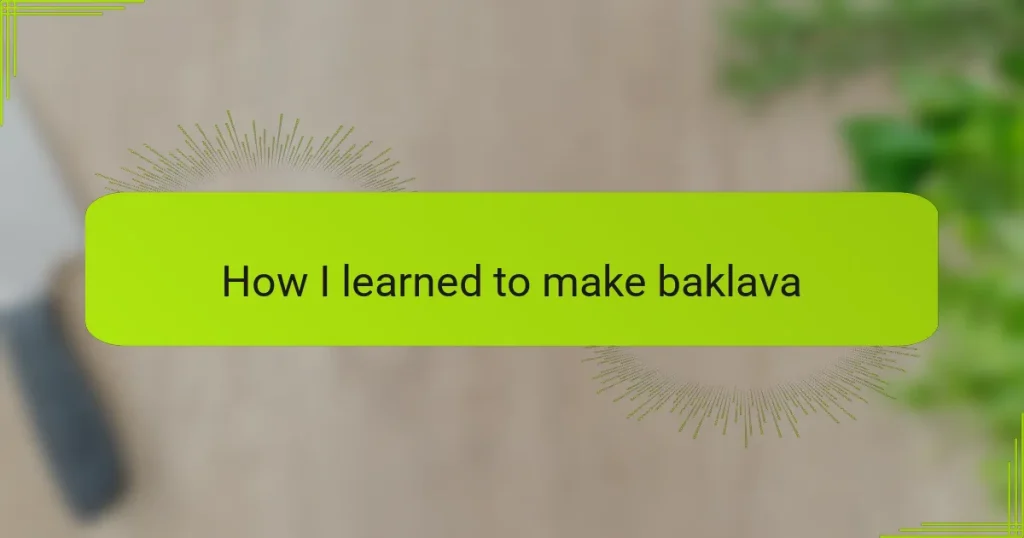Key takeaways
- Baklava consists of layers of phyllo dough, chopped nuts, and a sweet syrup, creating a unique texture and flavor balance.
- Handling phyllo dough requires patience; covering it with a damp towel prevents it from drying out during preparation.
- Letting baklava cool slightly before pouring syrup enhances the flavor and texture, ensuring it remains crisp.
- Storing baklava in an airtight container preserves its crunchiness; letting refrigerated baklava return to room temperature can improve taste and texture.
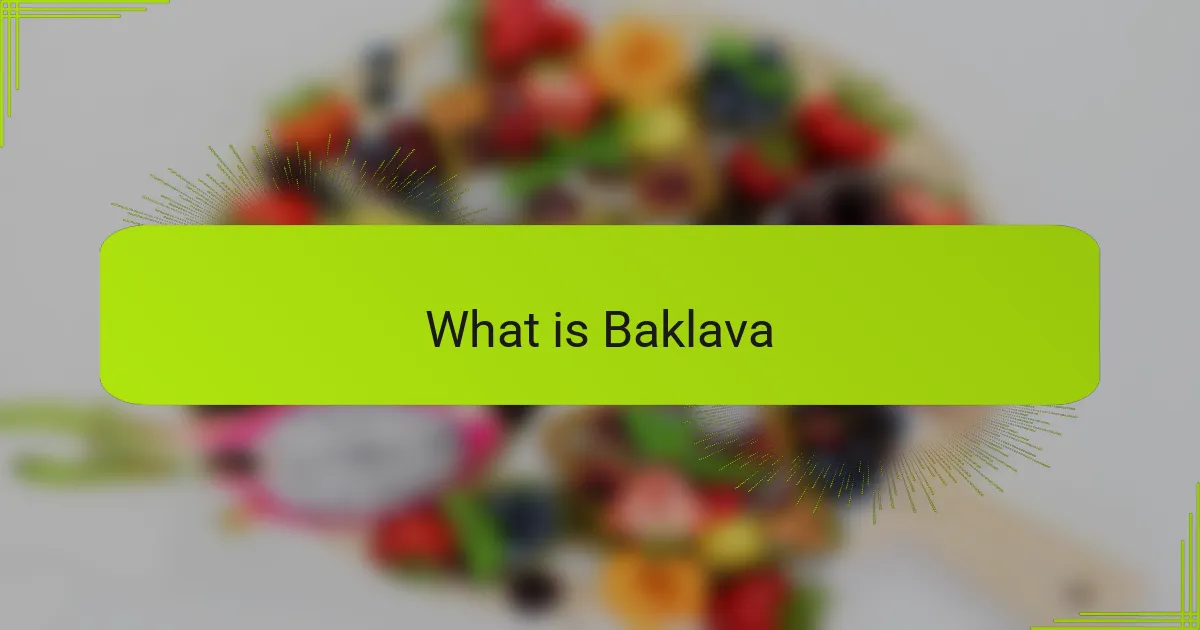
What is Baklava
Baklava is a rich, sweet pastry made from layers of thin, flaky dough called phyllo, filled with chopped nuts and drenched in honey or syrup. When I first tasted it, I was amazed by how crisp and tender it was at the same time—almost like biting into a delicate, nutty cloud. Have you ever wondered how something so simple can create such a complex burst of flavors and textures?
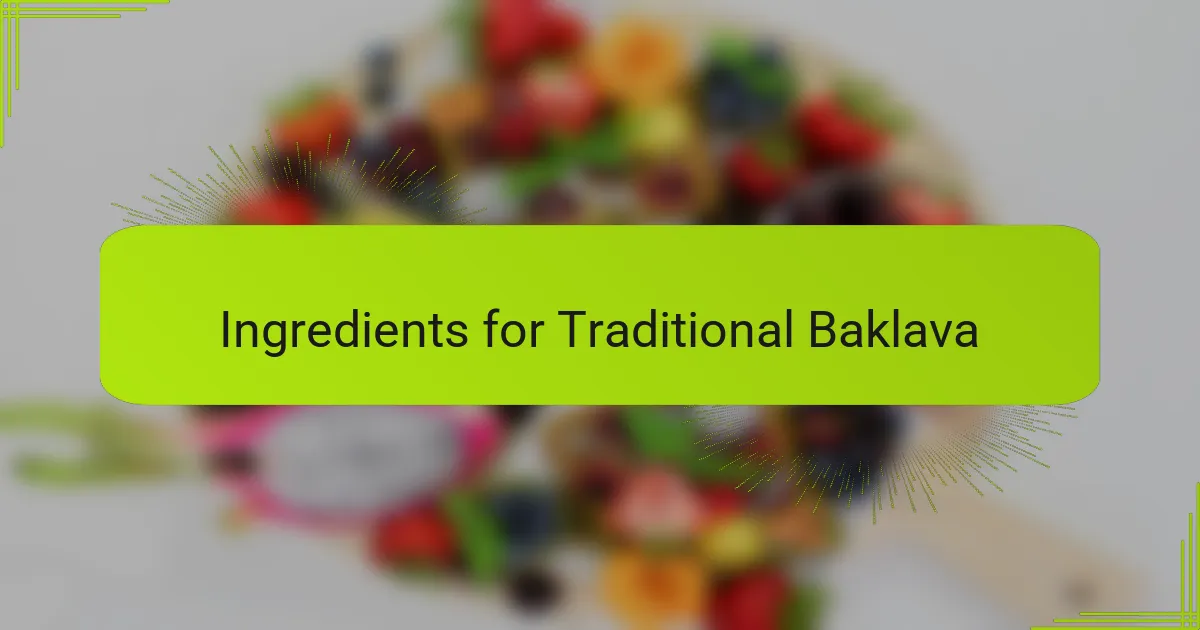
Ingredients for Traditional Baklava
The core of traditional baklava lies in its simple yet carefully chosen ingredients. Phyllo dough, those paper-thin sheets, are what give baklava its signature crispness—without them, it just wouldn’t have that delicate crunch that I love. Have you ever tried handling phyllo? It’s fragile and requires patience, which makes the baking process feel almost meditative.
Then come the nuts, usually a mix of walnuts, pistachios, or sometimes almonds. The combination adds a wonderful earthy richness that balances the sweetness perfectly. When I first chopped the nuts by hand, the aroma was so inviting it made the kitchen feel warm long before the dessert was ready.
Finally, the syrup, typically a mix of honey, sugar, lemon juice, and sometimes a hint of cinnamon or clove. This sticky glaze seeps into every layer, creating that melt-in-your-mouth texture that baklava is famous for. Sweet, sticky, and just a touch tangy—doesn’t that sound like a perfect way to cap off these ingredients?
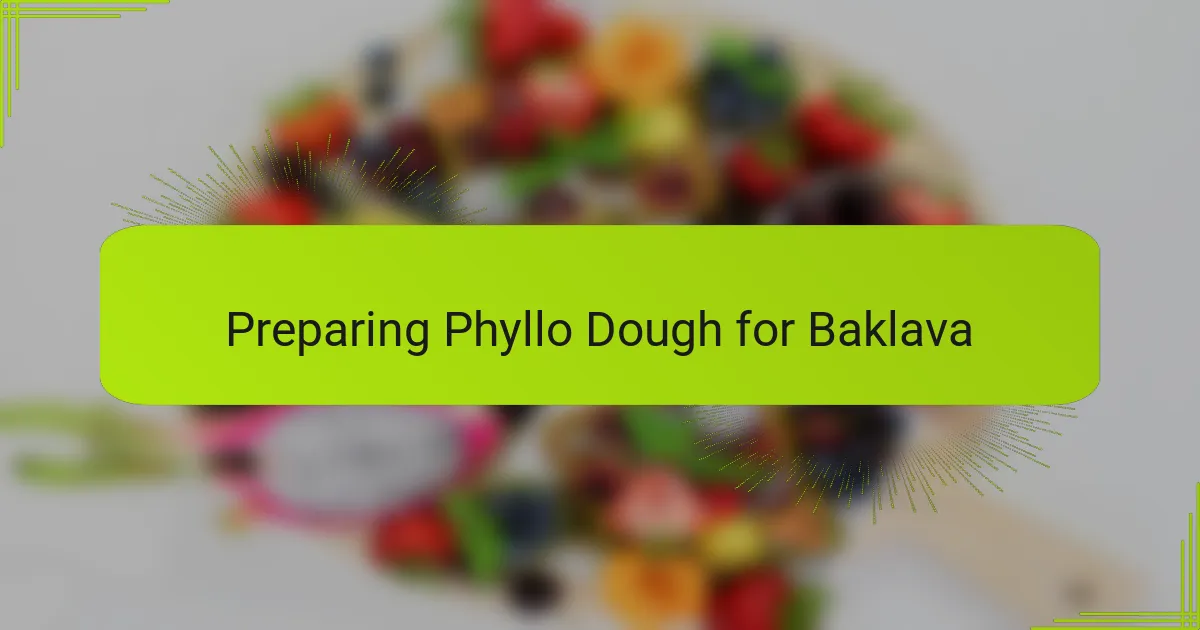
Preparing Phyllo Dough for Baklava
Handling phyllo dough for the first time felt a bit like meeting delicate glass—you have to be gentle, or it will tear instantly. I remember nervously unfolding those wafer-thin sheets, surprised at how light and fragile they were. Have you ever tried to separate layers so thin they almost seem invisible? It’s a careful dance between patience and precision.
Before layering, I found that brushing each sheet generously with melted butter was key. This simple step not only prevents sticking but also adds that irresistible golden crispness after baking. It was in this moment I realized how every little detail in preparation transforms the final baklava into something truly special.
One thing that helped me was lightly covering the phyllo stack with a damp towel while working. Without that, the dough quickly dries out and becomes brittle, which can be frustrating when trying to assemble the layers. Have you ever been halfway through a recipe only to realize your ingredients aren’t cooperating? That was me, learning to respect phyllo’s delicate nature.
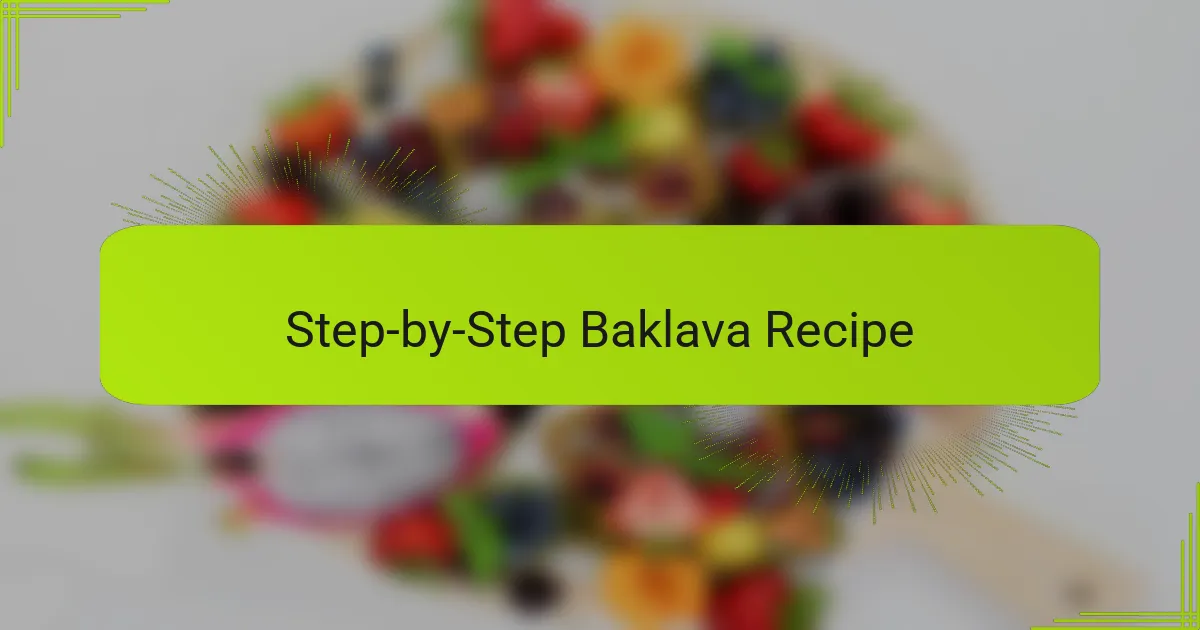
Step-by-Step Baklava Recipe
The first time I made baklava, following each step felt like a small victory. Layering the phyllo sheets, brushing them with melted butter, and sprinkling the nut mixture carefully between each layer required patience, but the anticipation of that flaky, golden result kept me focused. Have you ever noticed how the simple act of layering transforms individual ingredients into a work of art?
Cutting the assembled baklava into neat diamonds before baking was surprisingly satisfying—slicing through those buttery, fragile layers felt like creating little edible treasures. I couldn’t help but think, how does something so delicate survive the oven and come out perfectly crisp yet tender? Patience and precision really make all the difference here.
Pouring the syrup over the hot baklava was the final, magical step. As the sweet liquid seeped into each crack and crevice, the kitchen filled with a warm, inviting aroma that made all the effort worthwhile. Have you ever experienced that moment when your kitchen smells like pure comfort? That’s when I knew I had truly made baklava.
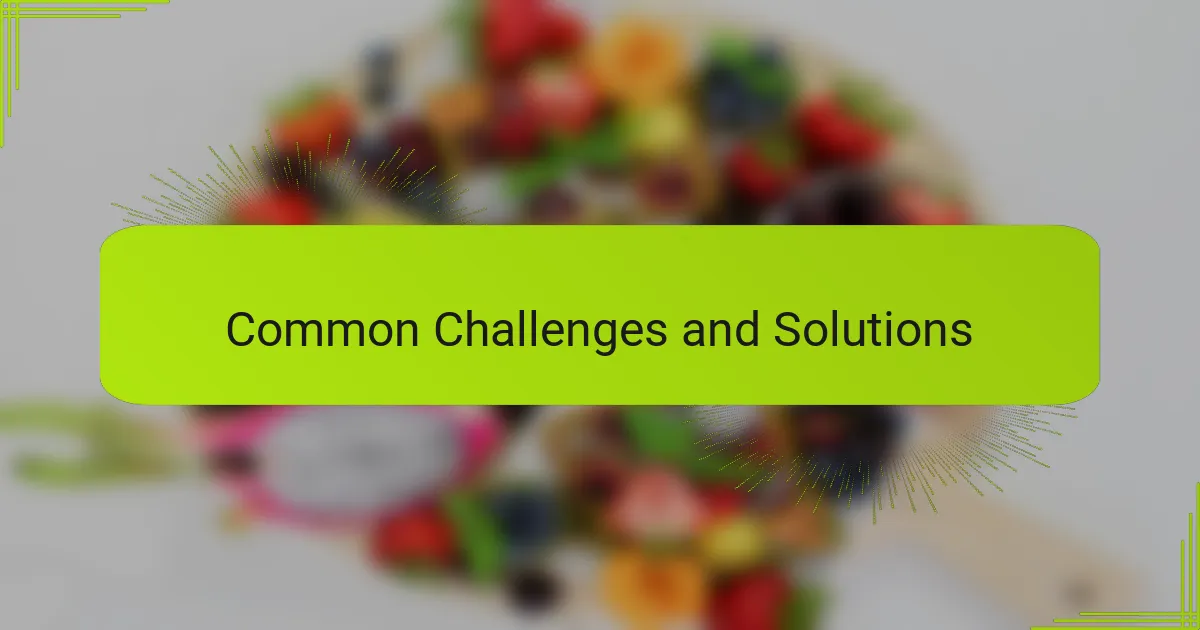
Common Challenges and Solutions
One challenge I faced early on was keeping the phyllo dough from drying out while assembling the layers. I learned the hard way that letting it sit uncovered is a recipe for brittle sheets that tear easily. Have you ever tried to patch a ripped phyllo sheet? It’s frustrating, but covering the stack with a damp towel really saved me from that mess.
Cutting baklava before baking also proved tricky. I used to worry about squishing the delicate layers or messing up the sharp diamond shapes. Over time, I realized using a very sharp knife and steady hands made the difference—slow and deliberate strokes helped keep everything intact. Isn’t it amazing how a small technique tweak changes the outcome completely?
Another hurdle was getting the syrup just right—not too thin, not too sticky. The first syrup I made was either watery or hardened too quickly, ruining the syrup soak. Through trial and error, I found that gently simmering the syrup and adding lemon juice helped balance the sweetness and prevent crystallization. Have you ever had syrup crystallize in your mouth? That’s a hard lesson I’ll never forget.
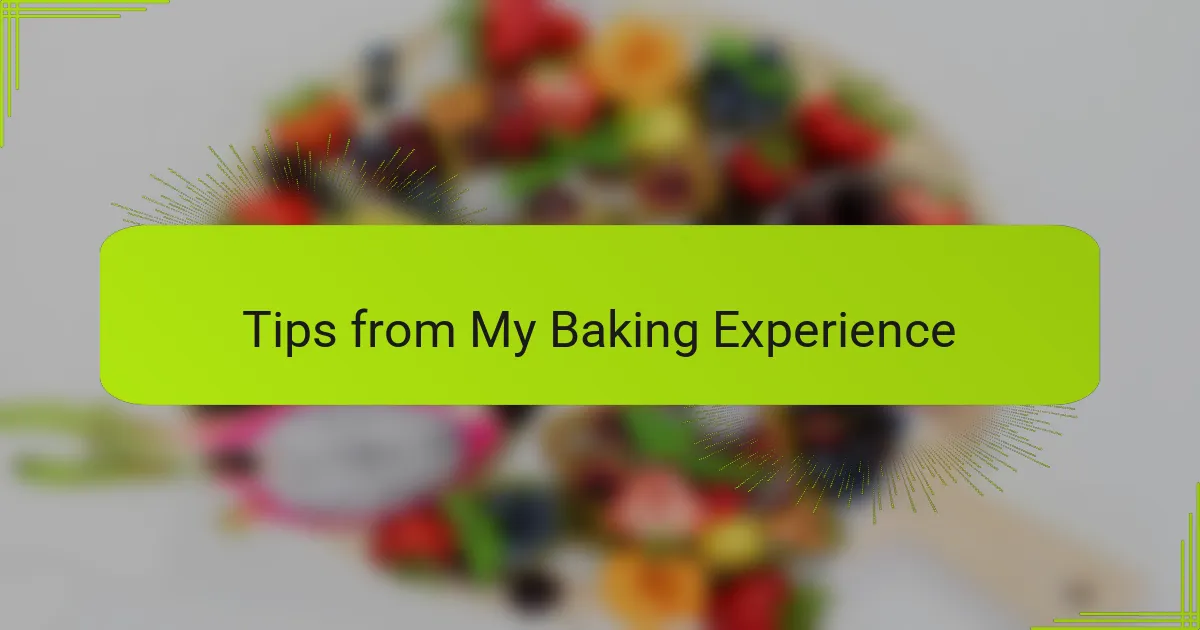
Tips from My Baking Experience
One tip I can’t stress enough is to be patient when working with phyllo dough. Early on, I rushed the layering and ended up with uneven, crumbly baklava. Taking the time to brush each sheet thoroughly with melted butter and handling them gently made all the difference—it felt like giving each layer a little love.
Another thing I learned was about the syrup: it’s tempting to pour it on too soon or too quickly. My first batch was soggy because I poured the syrup while the baklava was still hot from the oven. Now, I let it cool just enough so the syrup soaks in perfectly without turning the pastry limp. Have you found that sweet spot between warm and hot? It changes everything.
Finally, cutting the baklava before baking requires a steady hand and a sharp knife. I used to hesitate and press too hard, disturbing the delicate layers. But once I slowed down and trusted my grip, slicing became almost meditative, and the diamond shapes came out beautifully crisp. Isn’t it satisfying when patience pays off in the kitchen?
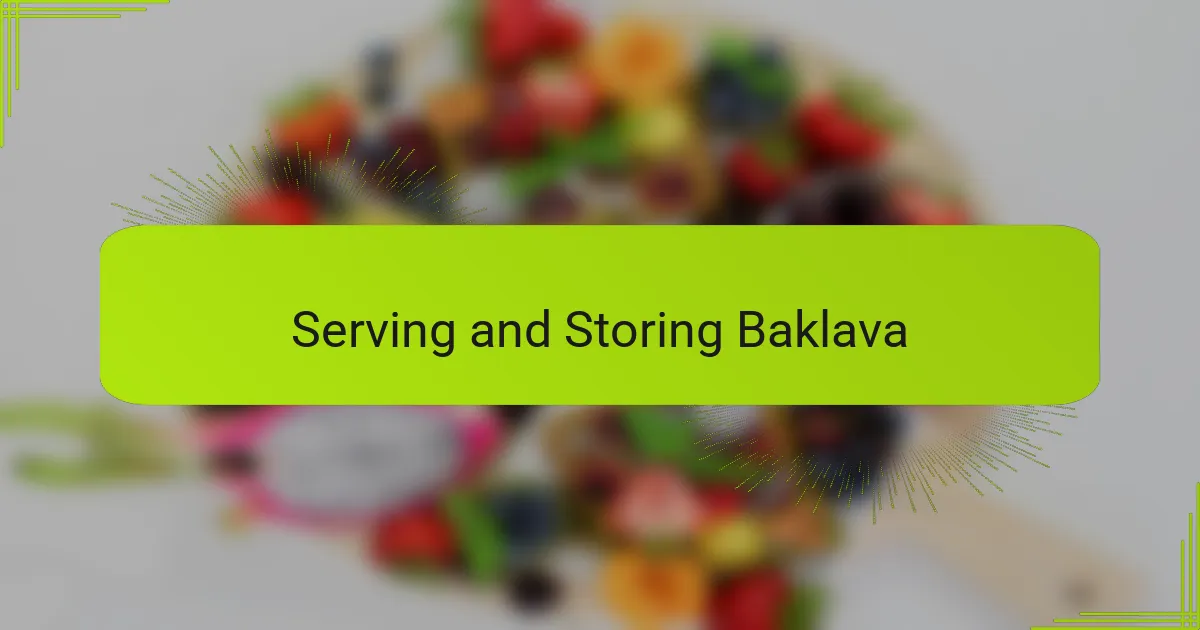
Serving and Storing Baklava
Serving baklava has become one of my favorite rituals after all the careful preparation. I like to let it sit at room temperature for a few hours so the syrup can soak in just right—have you noticed how that waiting time makes each bite more harmonious? It’s when the layers achieve that perfect balance between crispness and sweetness, almost like the dessert is settling into its final form.
When it comes to storing baklava, I learned the hard way that keeping it airtight is key. Leaving it uncovered even for a short while made the top layers lose their crunch, turning that magical texture into something sadly chewy. Have you ever bitten into what should be crisp baklava only to find it disappointingly soggy? That’s why I now store mine in a sealed container, and it stays delicious for several days.
If you need to keep baklava longer, refrigeration can be tricky because it sometimes dulls the flavor and texture. From my experience, bringing refrigerated baklava back to room temperature before serving helps revive some of its original charm. Isn’t it comforting to know that a simple pause at room temp can bring back that fresh-from-the-oven goodness? It’s a little patience that pays off, just like in making baklava itself.
